Mitochondrial Transfer from Human Platelets to Rat Dental Pulp-Derived Fibroblasts in the 2D In Vitro System: Additional Implication in PRP Therapy
- PMID: 40564967
- PMCID: PMC12192669
- DOI: 10.3390/ijms26125504
Mitochondrial Transfer from Human Platelets to Rat Dental Pulp-Derived Fibroblasts in the 2D In Vitro System: Additional Implication in PRP Therapy
Abstract
Platelet mitochondria have recently been increasingly considered "co-principal" along with platelet growth factors to facilitate tissue regeneration in platelet-rich plasma therapy cooperatively. To develop a convenient method to test this potential, we examined mitochondrial transfer using a simple two-dimensional culture system. Living human platelets were prepared from PRP obtained from 12 non-smoking healthy male adults (age: 28-63 years) and suspended in medium. Platelet lysates were prepared from sonicated platelet suspensions in PBS. After treatment with ultraviolet-C irradiation, a mitochondrial respiration inhibitor, or a synchronized culture reagent, rat dental pulp-derived fibroblasts (RPC-C2A) were co-cultured with platelets or platelet lysates for 24 h. Mitochondrial transfer was evaluated by visualization using a fluorescent dye for mitochondria or an antibody against human mitochondria. Ultraviolet-C-irradiated cells substantially lost their viability, and treatment with living platelets, but not platelet lysates, significantly rescued the damaged fibroblasts. Fibroblast mitochondria appeared to increase after co-culture with resting platelets. Although more microparticles existed around the platelets on the fibroblast surface, the activated platelets did not show significant increases in any parameters of mitochondrial transfer. This simple co-culture system demonstrated mitochondrial transfer between xenogeneic cells, and this phenomenon should be considered as an additional implication in PRP therapy.
Keywords: fibroblasts; in vitro; mitochondria; platelet-rich plasma; platelets; transfer.
Conflict of interest statement
The authors declare no conflicts of interest.
Figures

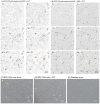
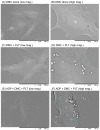
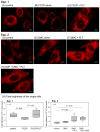

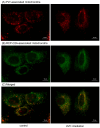
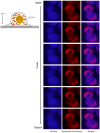
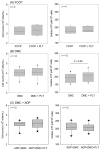

Similar articles
-
Pathogen-reduced platelets for the prevention of bleeding.Cochrane Database Syst Rev. 2017 Jul 30;7(7):CD009072. doi: 10.1002/14651858.CD009072.pub3. Cochrane Database Syst Rev. 2017. PMID: 28756627 Free PMC article.
-
Cost-effectiveness of using prognostic information to select women with breast cancer for adjuvant systemic therapy.Health Technol Assess. 2006 Sep;10(34):iii-iv, ix-xi, 1-204. doi: 10.3310/hta10340. Health Technol Assess. 2006. PMID: 16959170
-
Systemic pharmacological treatments for chronic plaque psoriasis: a network meta-analysis.Cochrane Database Syst Rev. 2021 Apr 19;4(4):CD011535. doi: 10.1002/14651858.CD011535.pub4. Cochrane Database Syst Rev. 2021. Update in: Cochrane Database Syst Rev. 2022 May 23;5:CD011535. doi: 10.1002/14651858.CD011535.pub5. PMID: 33871055 Free PMC article. Updated.
-
Systemic pharmacological treatments for chronic plaque psoriasis: a network meta-analysis.Cochrane Database Syst Rev. 2017 Dec 22;12(12):CD011535. doi: 10.1002/14651858.CD011535.pub2. Cochrane Database Syst Rev. 2017. Update in: Cochrane Database Syst Rev. 2020 Jan 9;1:CD011535. doi: 10.1002/14651858.CD011535.pub3. PMID: 29271481 Free PMC article. Updated.
-
Platelet count, spleen length, and platelet count-to-spleen length ratio for the diagnosis of oesophageal varices in people with chronic liver disease or portal vein thrombosis.Cochrane Database Syst Rev. 2017 Apr 26;4(4):CD008759. doi: 10.1002/14651858.CD008759.pub2. Cochrane Database Syst Rev. 2017. PMID: 28444987 Free PMC article.
References
-
- Knightly N., Lee C., O’Brien L., Qayyum T., Hurley C., Kelly J. Role for platelet rich plasma as an adjuvant therapy in wound healing and burns. Eur. J. Plast. Surg. 2023;46:465–474. doi: 10.1007/s00238-023-02050-8. - DOI
MeSH terms
Grants and funding
LinkOut - more resources
Full Text Sources
Research Materials

